Last updated on July 23, 2023

Llanowar Elves | Illustration by Chris Rahn.jpg
Galadriel of Lothlórien is one of the multiple scry payoffs The Lord of the Rings: Tales of Middle-earth, and it sets us up with to build around scrying in Commander. I’m convinced it’s the best of the bunch by a country mile.
This budget deck guide gifts you the knowledge to confront the darkest of shadows and turn back the faceless enemies that stand in your path with the power of knowledge. Scry your way into lands and overpower your opponents with an overwhelming resource advantage!
The Deck
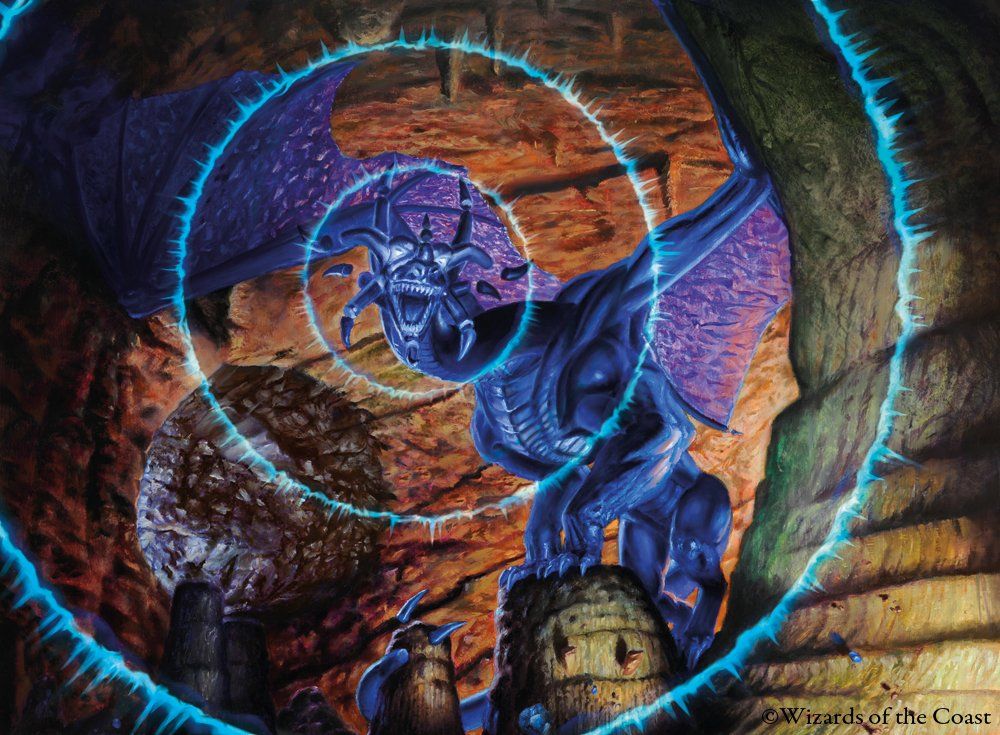
Sapphire Dragon | Illustration by Joe Slucher
Commander (1)
Creatures (25)
Sigiled Starfish
Celeborn the Wise
Eligeth, Crossroads Augur
Arwen Undómiel
Elrond, Lord of Rivendell
Kazandu Mammoth
Rangers of Ithilien
Cryptic Annelid
Sapphire Dragon // Psionic Pulse
Sporemound
Llanowar Elves
Magus of the Future
Arbor Elf
Elrond, Master of Healing
Scourge of Fleets
Tatyova, Benthic Druid
Dakra Mystic
Rampaging Baloths
Stone-Seeder Hierophant
Elvish Mystic
Elvish Mariner
Skyshroud Ranger
Fyndhorn Elves
Lotus Cobra
Scute Swarm
Sorceries (8)
Birthday Escape
Elven Farsight
Glistening Dawn
Reason // Believe
Silver Scrutiny
Consuming Tide
Preordain
Serum Visions
Instants (10)
Bombadil's Song
Glorious Gale
Council's Deliberation
Stroke of Genius
Tel-Jilad Justice
Condescend
Joint Exploration
Fated Infatuation
Reality Shift
Brainstorm
Artifacts (5)
Brainstone
Sentinel Totem
The Temporal Anchor
Mazemind Tome
Sol Ring
Enchantments (8)
Eyes Everywhere
Aqueous Form
Lost Isle Calling
Future Sight
Scroll of Isildur
Netherese Puzzle-Ward
Zendikar's Roil
Retreat to Coralhelm
Planeswalkers (2)
Jace, Mirror Mage
Nissa, Steward of Elements
Lands (41)
Path of Ancestry
Crystal Grotto
Exotic Orchard
Simic Growth Chamber
The Grey Havens
Command Tower
Temple of Mystery
Vineglimmer Snarl
Zhalfirin Void
Yavimaya Coast
Halimar Depths
Island x13
Castle Vantress
Forest x15
Rivendell
Middle-earth’s creatures have given Commander brewers ample opportunity to pull out some lesser-known effects that get quite a bit better with the synergies presented in the set. Galadriel has niche effects in spades, as well as ample staples given new purpose and power in the context of a scry/landfall hybrid deck.
The Commander
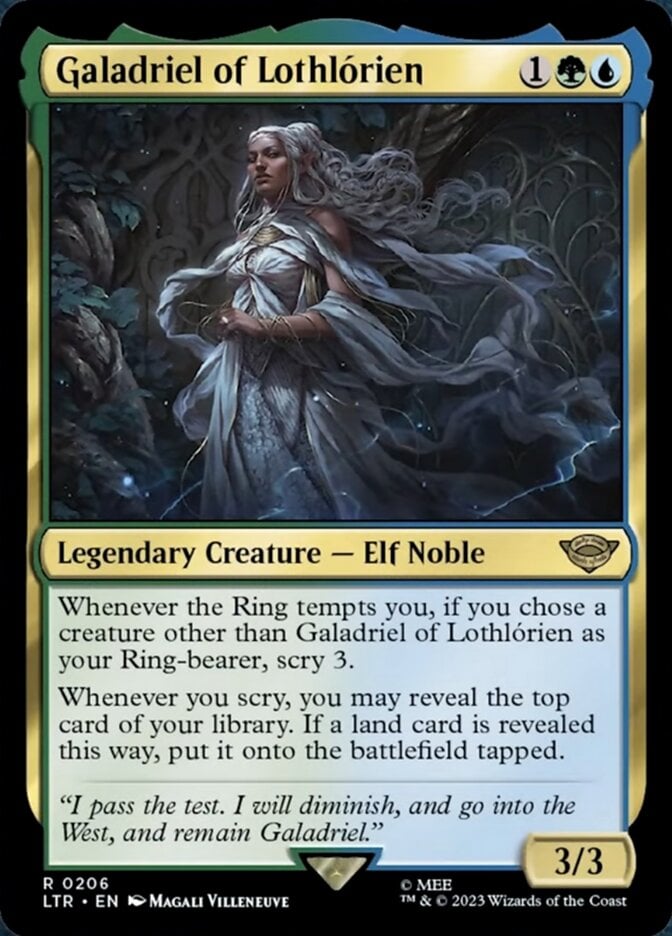
Galadriel of Lothlórien tells a complete story: don’t let it fall to the temptations of the Ring and it’ll reward you with knowledge. Knowledge rewards you with bountiful lands. You’re looking to scry as much as possible to put one of your 41 lands onto the battlefield each time. You’ll want to know what’s on top of the library prior to help line up lands as often as possible.
This gives you a total of three major categories to look at beyond the regular commander needs: scrying, top deck manipulation, and lands payoffs.
Scry Tribal
With Galadriel triggering on any scry, not just its own, you’re stacking as much of the deck as you can with effects that scry in categories all Commander decks want. This shows up brightest in your card advantage and interaction categories, but you’re also running a solid chunk of cards entirely dedicated to scrying over and over.
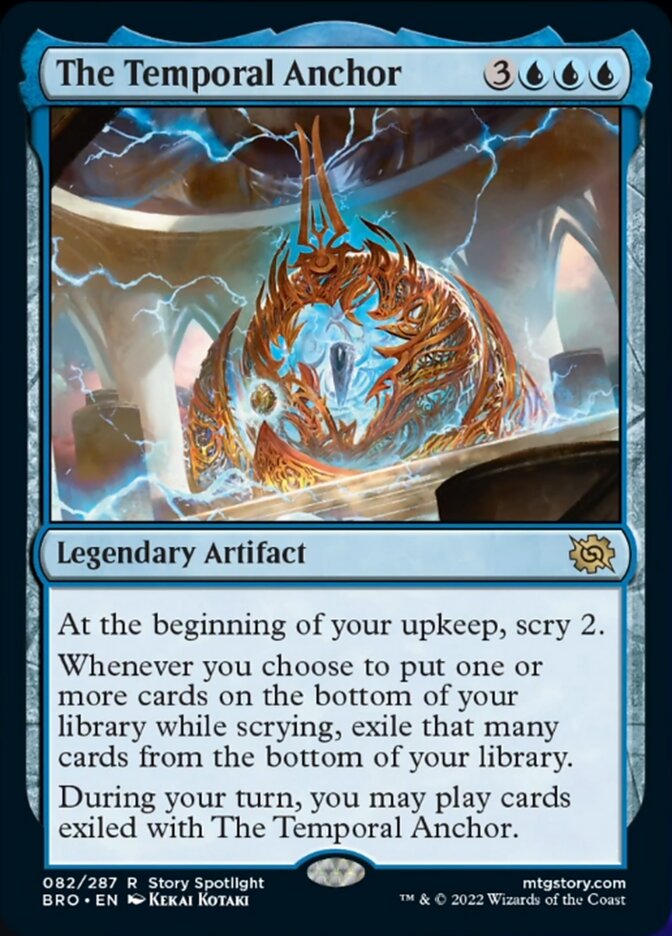
The Temporal Anchor by far is the spiciest inclusion in this deck. Because Galadriel wants to put as many lands on top as possible, you can “draw” all non-land cards you scry by sticking them in the anchor and put a land you see each time into play. Because you’re looking to scry a lot, this is going to amass outrageous value if unanswered.
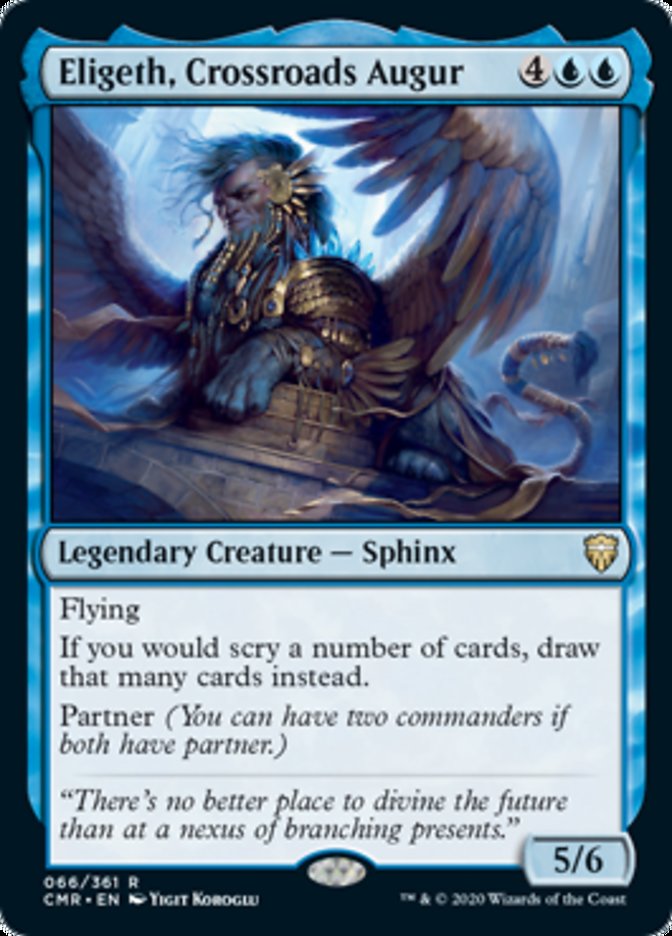
Eligeth, Crossroads Augur transforms all your scry into raw card draw. Because it’s a replacement effect, Galadriel won’t trigger to get you lands from this. But when you deploy Eligeth, you’re likely going to be at a point where you don’t need the extra lands and instead just want a quick way to fill your hand back to full.
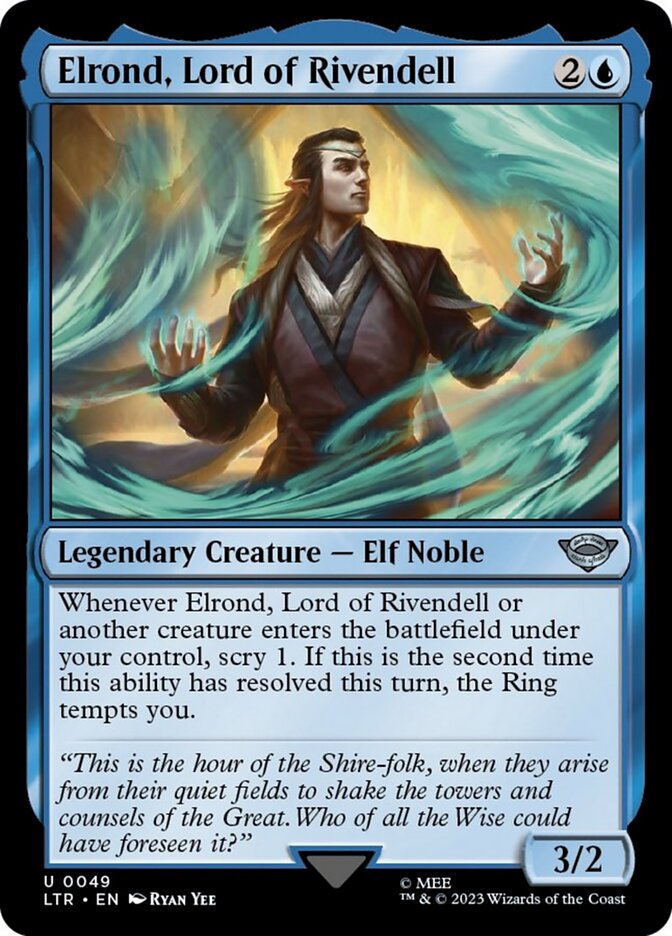
Elrond, Lord of Rivendell has a lot of power for just an uncommon. Each creature entering the battlefield gives you a scry to potentially put a land into play. Then, if you can get the ability to trigger twice in a turn, Galadriel’s scry triggers when Elrond’s Ring temps you trigger resolves for even more scry goodness!
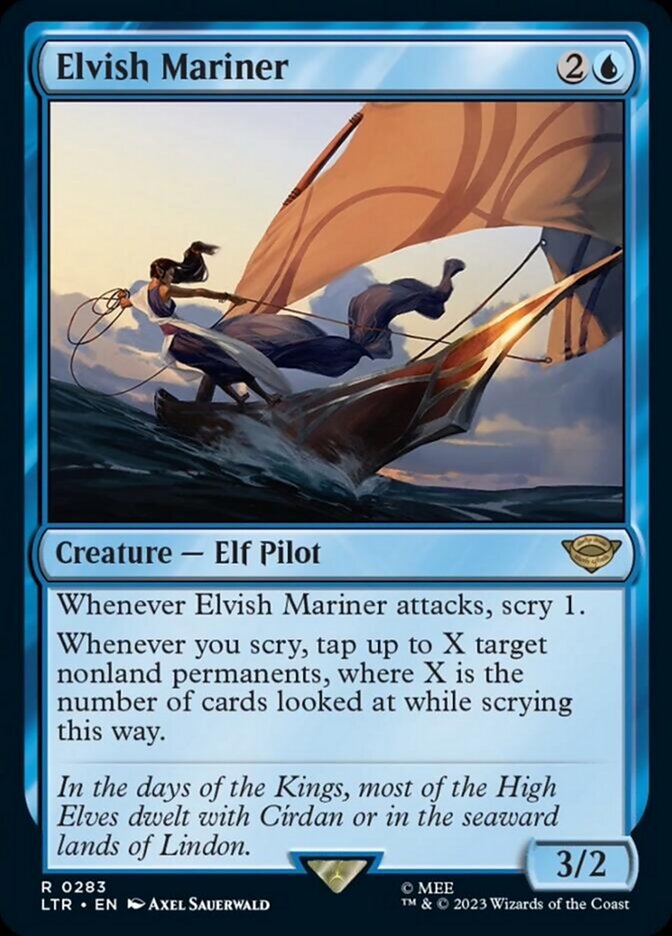
Elvish Mariner from the new Jumpstart packs may seem innocuous because it just taps things and gives you an attack scry. With the quantity of scrying you’re doing, this can skip some opponents' turns with some well-timed Ring tempts you triggers, locking out three lands in a player’s untap or just tapping down the biggest, scariest threats. It also makes attacking a breeze with how much scrying you’re looking to do on your turns, clearing a way to slam in for tons of damage.
Elrond, Master of Healing and Arwen Undómiel both serve a similar role in paying your scry off with power. Elrond is more expensive, but puts counters on a creature for each card looked at while giving you a small amount of protection in the card draw payoff should your creatures with counters get targeted.
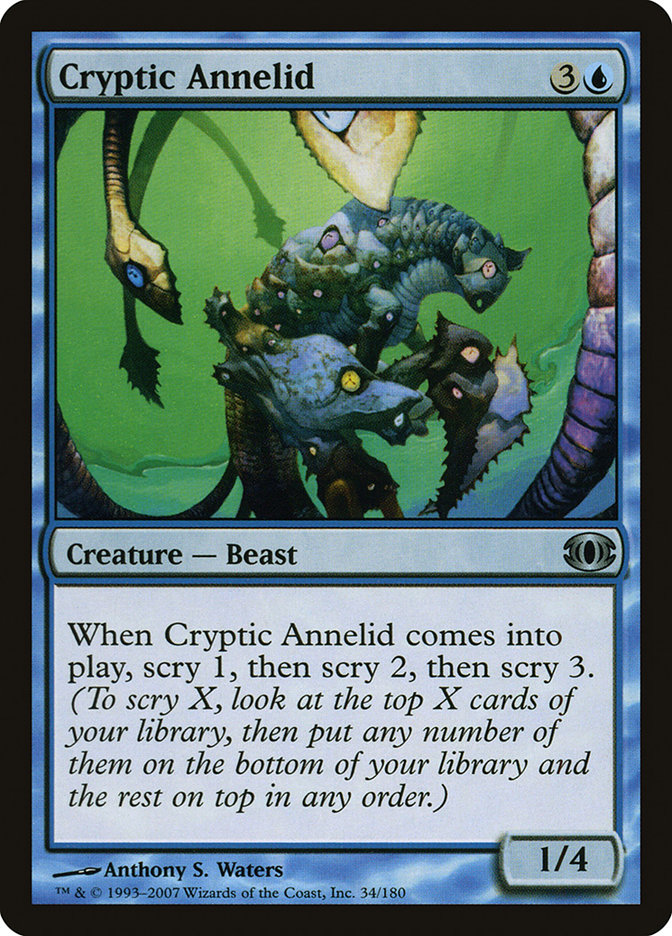
Cryptic Annelid gives you three scry triggers, each separately triggering your “whenever you scry” effects. All three scry effects resolve first, then Galadriel triggers for each. This makes it fairly easy to set up one or two lands on top when you can see up to six cards alongside your other top deck manipulation effects for a ton of ramp on a draft-chaff level uncommon.

Jace, Mirror Mage has a ton of flexibility; if you can kick it, you get to scry 2 twice instantly. If you need to, its 0 ability gets a non-land off the top of your library, which can further set up Galadriel. You don’t even need it to stick more than a turn or two to get all the value you’d want from it so long as you can hit lands.

Retreat to Coralhelm shows up as a combo engine in many landfall decks, and that’s no exception here. Every time a land enters the battlefield, you can scry. Whenever you scry, you can put a land into play. This lets you flip groups of land from the top of your library onto the battlefield with just your commander in play and is wildly empowered further by other scry effects.
The Ring Tempts You
There’s a sub-theme within the scrying focus: the “Ring Tempts You” cards. These each trigger Galadriel, offering you a scry 3 if you have any other creature besides Galadriel out that you can make your Ring-bearer. Stapling scry 3 to a Magic card can turn it from a mediocre Draft common into a Constructed all-star.
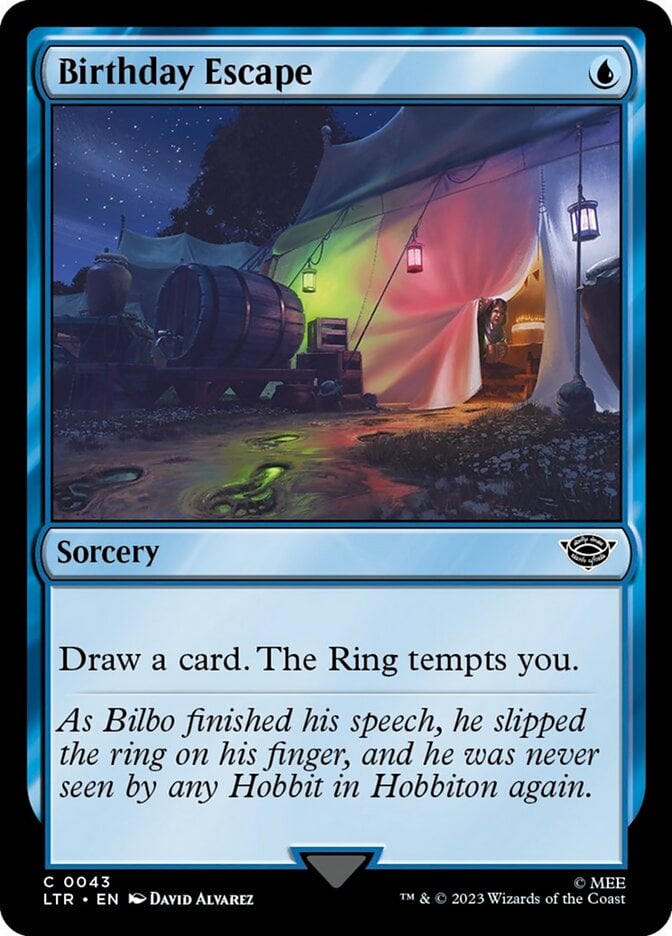
Birthday Escape is the primary example. On its own, it’s a low-value cantrip. With your commander, it's a better version of Serum Visions, one of Magic’s most powerful cantrips. On top of that, you can put a land you see onto the battlefield, which is a truly ludicrous amount of efficiency for just one blue mana.
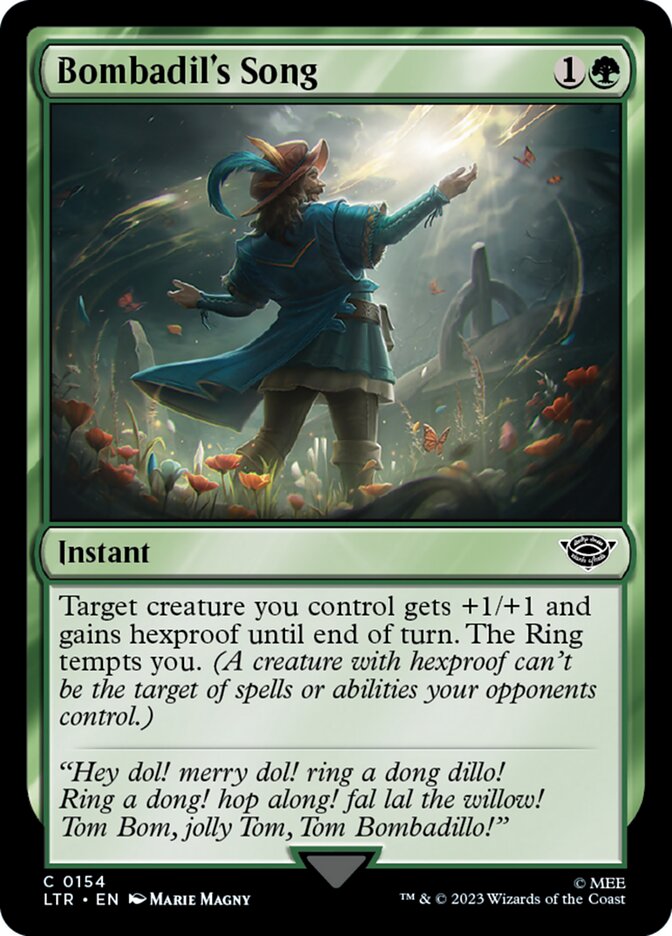
Bombadil's Song helps keep your commander or other critical pieces of your game plan alive while also coming with a potential scry 3 and ramp. Without that ramp, it’d be a worse version of Ranger's Guile most of the time. With it, it’s like Rampant Growth attached to a Guile at no extra cost.
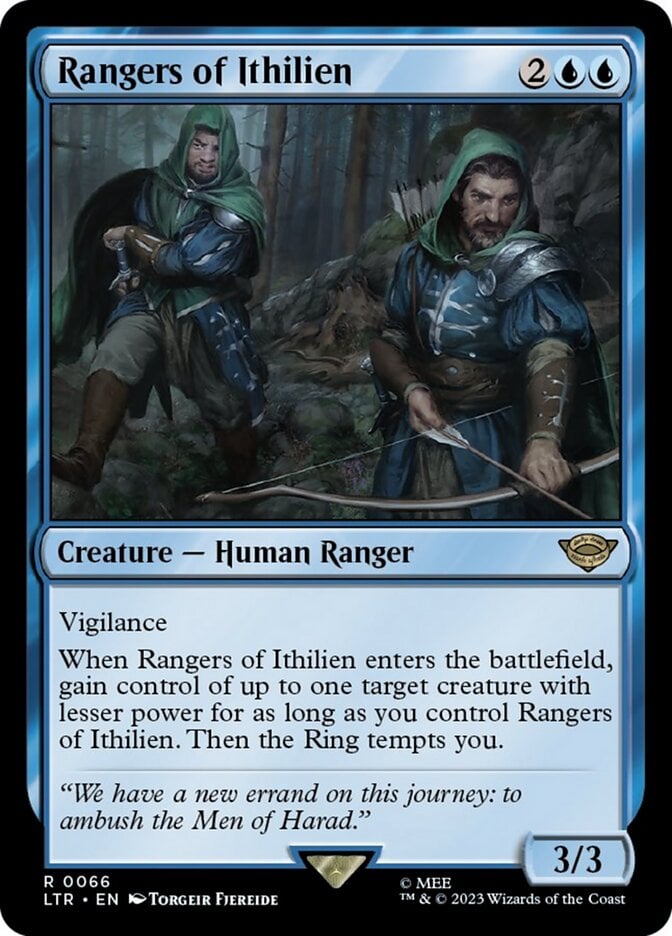
Rangers of Ithilien is normally a weaker version of Sower of Temptation; in this deck, they’re doing a good impersonation while also giving you a free Ring temptation for scry value.
Scroll of Isildur normally would see play to yoink a Sol Ring temporarily, with the temptation being a footnote. This not only steals an artifact, but it can also scry and put lands into play the turn it comes in, making its worst-case scenario still feel excellent. Chapters 2 and 3 are additional card advantage while locking down aggressive threats you’d rather not let attack you. This single card just does so many things this deck wants. I love it.

Most Commander decks aren’t clamoring to play Essence Scatter. What if Scatter also could scry 3 and ramp you, though? Suddenly I’m very interested, and that’s exactly what Glorious Gale can be so long as you’re countering commanders.
Top Deck Manipulation
To make sure you can get lands onto the battlefield as often as possible when scrying, you’re packing plenty of tools to set you up.
Future Sight and Magus of the Future give you an easy way to know what’s coming and play spells accordingly. With lands on top, you can play them for turn if need be or use scry triggers to put them into play instead, even if they just scry 1. When you don’t see lands, you can cast those spells, functionally drawing you a card each time you do.
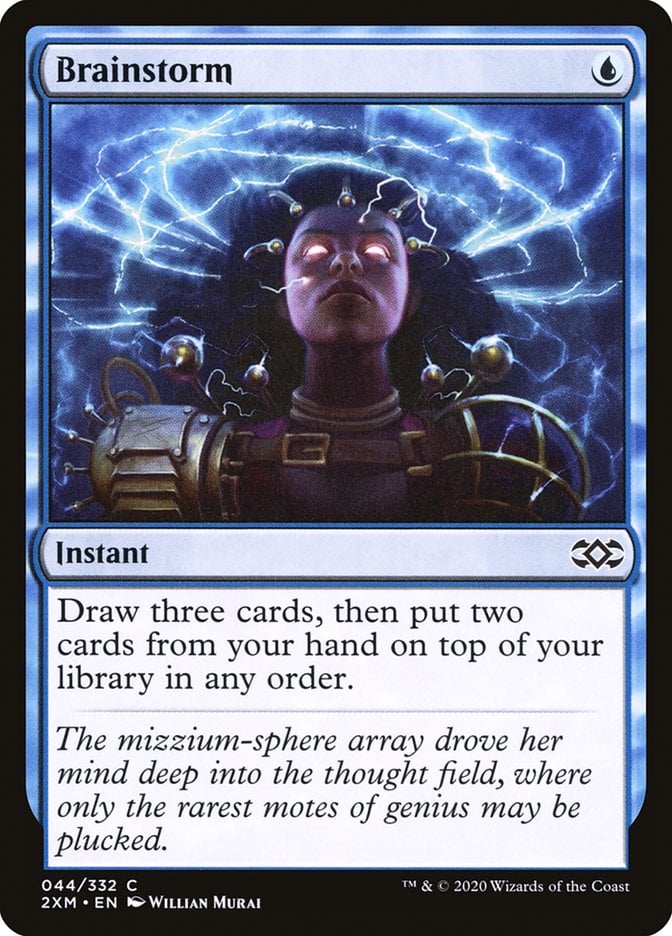
Brainstorm and Brainstone are two inexpensive ways to stick lands from your hand on top of your library before you scry, ensuring you can flip them into play when you scry.
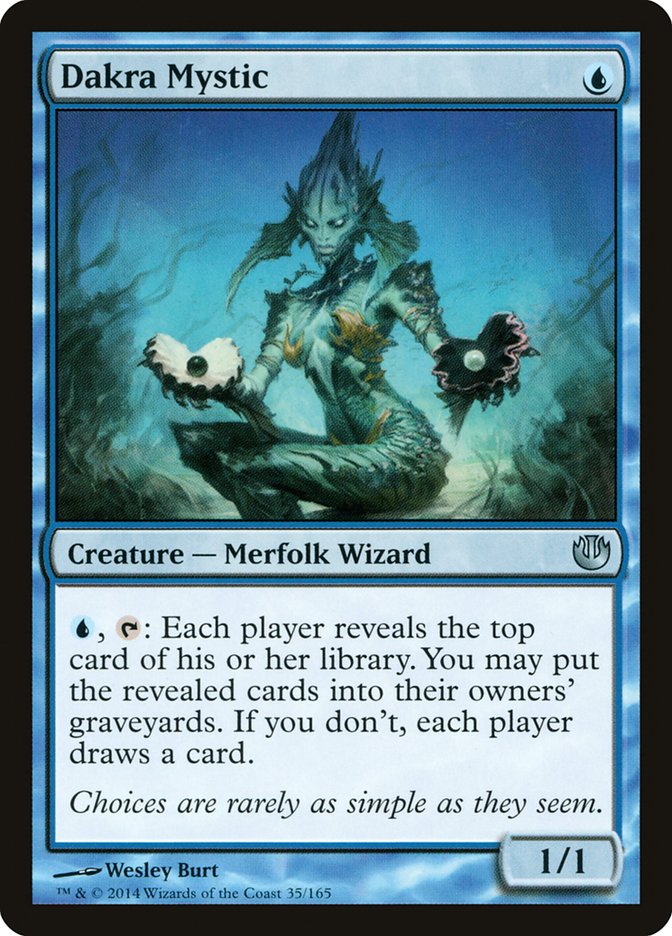
Dakra Mystic is another incredibly inexpensive tool that can use to draw a non-land card you want off the top before you scry again to increase your chances of hitting lands.
Lands Payoffs
Once you’ve established an engine that churns lands out of your deck onto the battlefield, having ways to benefit beyond just extra mana can be an easy way to convert this into a victory.
Rampaging Baloths and Scute Swarm both can take over a game if unanswered. Scute Swarm in particular can be easy to protect from single target removal as long as you can just hold up a way to scry a land into play to trigger it in response to interaction.

Glistening Dawn can easily look like two 10/10 eggs for 4 mana that dodge creature-based removal until they’re ready to attack. You need some tools to end the game; 10/10s are pretty good at that.

Tatyova, Benthic Druid draws you cards every time a land enters the battlefield. With scry 2 or larger, often this can set up a land, put it into play with Galadriel’s trigger, then draw you a non-land you stashed under it. Tatyova has been a threatening commander for a while; any Simic landfall deck can easily slot it into the 99, and this deck is no exception.
Lotus Cobra and Stone-Seeder Hierophant both make mana as you put lands into play. These kinds of effects can snowball wildly out of control. You can pay mana to scry then make mana when your commander’s trigger resolves, which can be spent to scry more to ramp more to scry more… you get the idea.
The Mana Base

The deck runs 42 lands (including Kazandu Mammoth), which may seem high, but you’re going to want to see a lot of lands. You don’t want to be missing land drops and you want to scry into lands, making a high density necessary for the deck’s success.
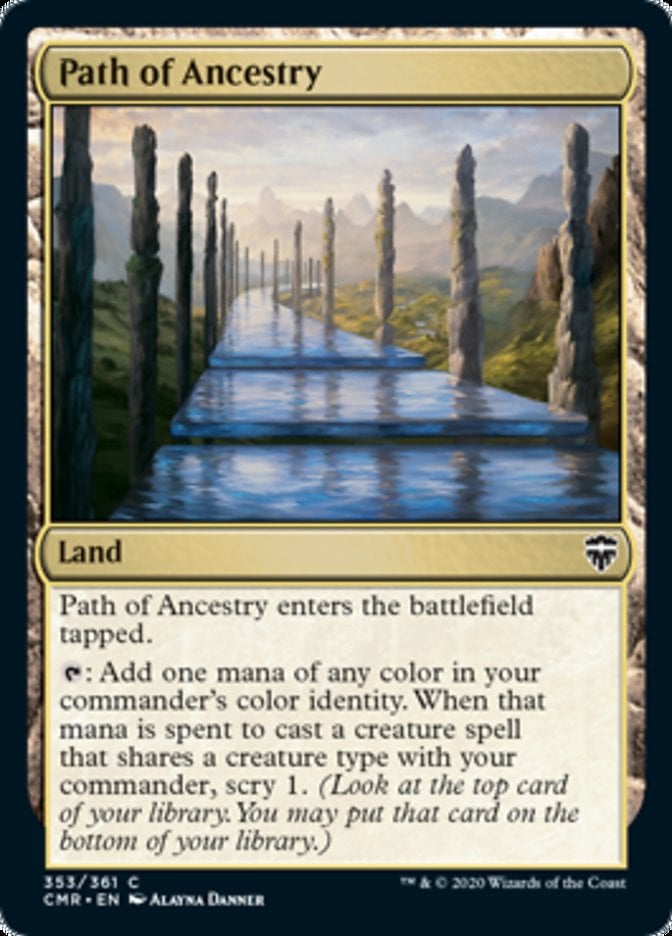
Of these, you’re playing seven lands that scry for you. Path of Ancestry scrys on cast for your commander and if your draw any of your nine other elves for free value.
Crystal Grotto, The Grey Havens, Temple of Mystery, and Zhalfirin Void all scry when they enter the battlefield. You can scry into them with Galadriel, put them into play, then immediately scry again to possibly get another land for free. You’re often going to want to save these in hand until after your commander is out.
Castle Vantress and Rivendell both can scry, and while they’re a bit pricey when you’re making buckets of mana from getting a bunch of free lands from Galadriel. This cost is fairly low and keeps that snowball rolling.
Beyond lands, you’re running six 1 mana ramp sources to try to get your commander on the table on turn two: Llanowar Elves and friends all make an appearance in this category. You’re also running Skyshroud Ranger to potentially get a second land into play on turn 2 while also acting as a combo piece.
The Strategy
Playing this deck can be mentally taxing. You’re going to be making a ton of decisions every turn; here are some tips to speed up your turns and not make the table roll their eyes every time you untap and three upkeep scry triggers go onto the stack.
If you can scry a land to the top with Galadriel out, it's usually going to be what you want. If you don’t see a land on top when scrying, you can take a risk and put the card you’re looking at on the bottom to try to blindly flip a land into play, but there’s a real cost to doing this. Sometimes you need an answer or a bigger threat; sequencing to get that card off the top of your library and into your hand can be more valuable than trying to get one extra land onto the table.
The Ring isn’t just a way to scry: it also loots if you get to the second mode. In a deck all about knowing what’s on top of your library, having an attack-based tool that can draw you a card can be a major resource.
Winning the game normally happens by generating more resources than your opponents. Big X spells like Stroke of Genius sets you up with a ton of cards as a reward for getting access to loads of mana. From there, your big landfall token engines can snowball out of control, or you can get your board pumped from Arwen and Elrond while tapping down blockers to push through big chunks of damage.
Combos and Interaction
Galadriel of Lothlórien has some important rules to keep in mind. First, its “Whenever you scry” trigger, along with other cards in the deck with the same text, resolve after whatever causes the scry resolves. For example, when you cast Preordain, you resolve all the text of the spell before Galadriel’s ability goes onto the stack. As Preordain resolves, you scry 2, then draw a card. Then Galadriel triggers, having seen you scry during the spell’s resolution.

Cryptic Annelid is another example of this interaction in a fairly complex way. The Annelid’s enters the battlefield trigger has you scry 1, then scry 2, then scry 3. You’ll do all three before Galadriel triggers, and it triggers three times, once for each scry that occurred during the Annelid trigger’s resolution.
Retreat to Coralhelm with Skyshroud Ranger can combo to put all the lands from your hand onto the battlefield; tap the ranger to put a land onto the battlefield, triggering Retreat, untapping the ranger. Pair this with Simic Growth Chamber and you’ve got a way to get infinite landfall triggers.
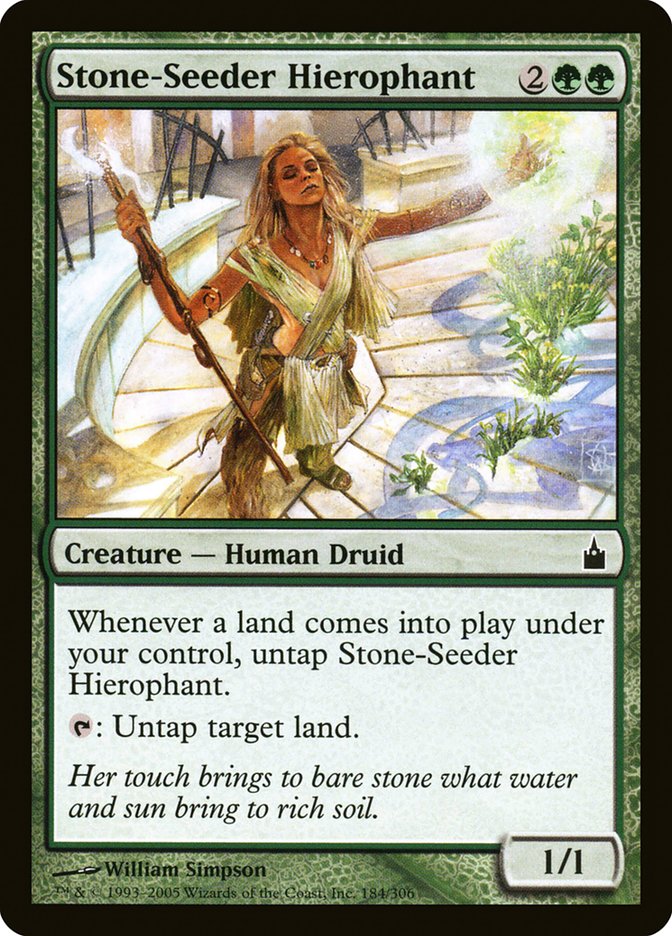
Stone-Seeder Hierophant triggers when a land enters the battlefield to untap, meaning with this combo you can make infinite mana while bouncing the Simic Growth Chamber over and over again.

Beyond this common combo, the scry mode with your commander lets you scry each time you put a land into play. If you can line up lands on top of your library with effects like Brainstorm, any land entering the battlefield flips any other number of lands in a row from the top of your library into play. This can cause your scry effects to chain into more and more lands for explosive opportunities.
Budget Options
Sensei's Divining Top probably is the most ludicrous upgrade route you could go because it gives you stupid amounts of control over what’s on top of our library at any moment. You could even build in some combo potential with artifact discounts and your Future Sight effects with Galadriel as a base for extra mana and acting as a way to dig for the combo pieces.
Scroll Rack similarly gives you an amazing tool to keep lands on top where you want them to scry cheaply into play over and over.
Kenessos, Priest of Thassa not only increases all your scry by 1, but it can act as a reason to include more bigger, scarier sea creatures to ramp into if that’s a direction you’d want to build towards.
Mirri's Guile only costs one green mana and lets you rearrange the top of your library on each of your upkeeps. With other upkeep scry effects, this can dig you to lands, draw you spells, and make the whole of the deck play smoother.
The Reality Chip costs a bit more financially than its other Future Sight alternatives, but does a lot of what the deck wants at a cheap price even if you don’t reconfigure it. You can make it the Ring-bearer and know what’s on top to help determine when you want to scry. If you equip it to something, getting to play from the top of your library is excellent.
Avenger of Zendikar and Aesi, Tyrant of Gyre Strait are two more pieces of landfall redundancy that power up that element of the deck with their inclusion.
Other Builds
Simic Elves focused around scrying and top deck manipulation could be a route to explore. Realmwalker and Augur of Autumn both are cheap tools to play from the top of your library, and there are ample elves that scry or help you get more mana.
Precognition Field could also be a direction to consider with instants and sorcery scry effects helping you ramp and dig for interaction and combo pieces. This version likely cuts a lot of the temptation cards because it’s not likely to always have multiple creatures in play with your commander to consistently get it scry when you make something else the Ring-bearer.
The Top/Future Sight combo decks may want to consider this kind of direction.
As mentioned earlier, ramping into scary sea monsters like Stormtide Leviathan easily could work for this kind of deck. It plays great with Kenessos, who makes a great commander for those kinds of decks in its own right. It has a fun twist in being scry based to help keep all elements of the deck working in harmony.
Commanding Conclusion
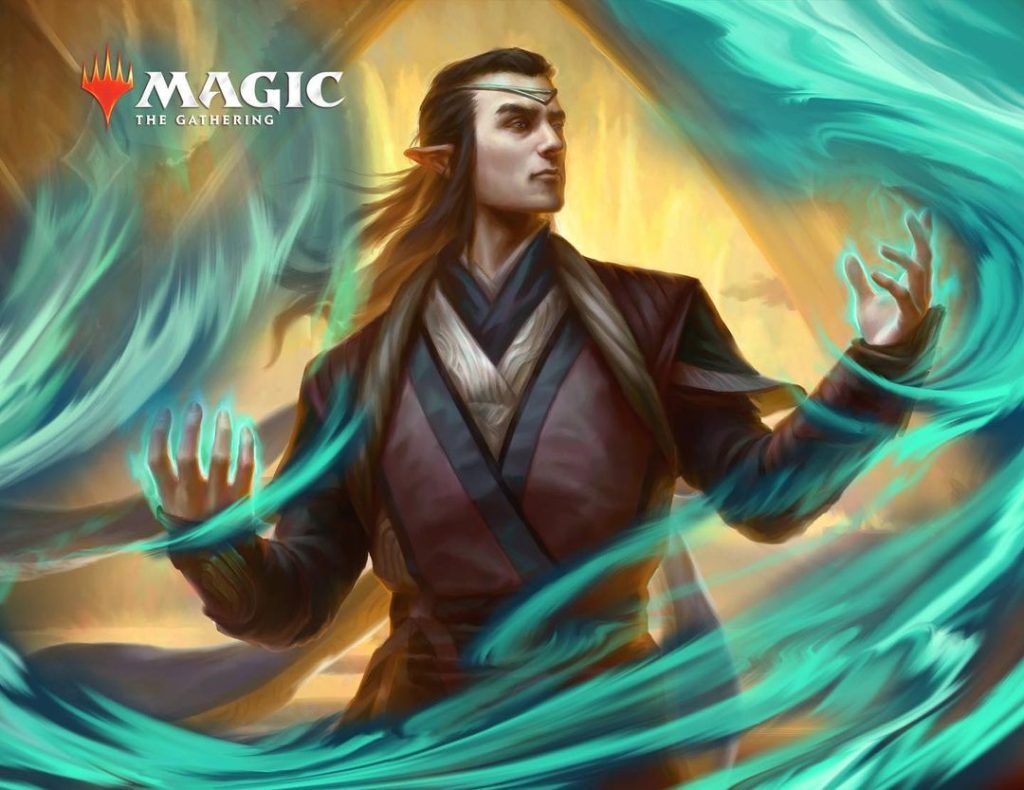
Elrond, Lord of Rivendell | Illustration by Ryan Yee
Any commander that wants card selection and rewards you with extra mana is ripe for running away with a game by sheer resource advantage. Putting lands is a tried-and-true powerful strategy, and Galadriel gives a fresh take on that strategy with plenty of unique tools few other decks want.
If you’re in the market for some Simic landfall goodness but don’t want to make the super popular commanders like Tatyova or Aesi, Galadriel of Lothlórien could be the perfect commander for you. With this guide, you’re set with a perfect starting point to build from!
Want more Commander and Magic content? Join the Draftsim Discord, and follow Draftsim on Twitter for more content covering everything happening in the world of Magic!
Follow Draftsim for awesome articles and set updates: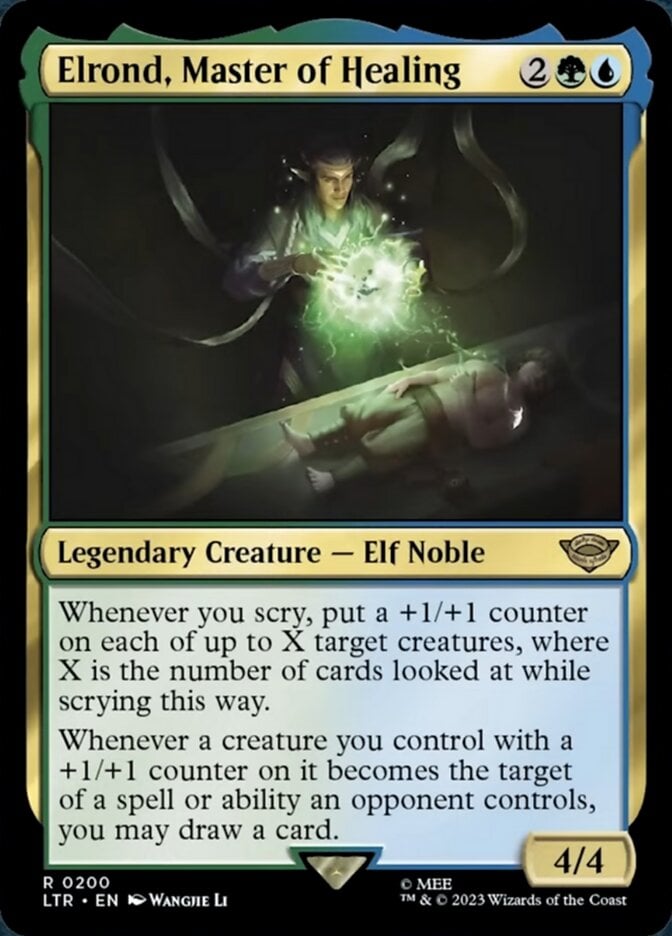
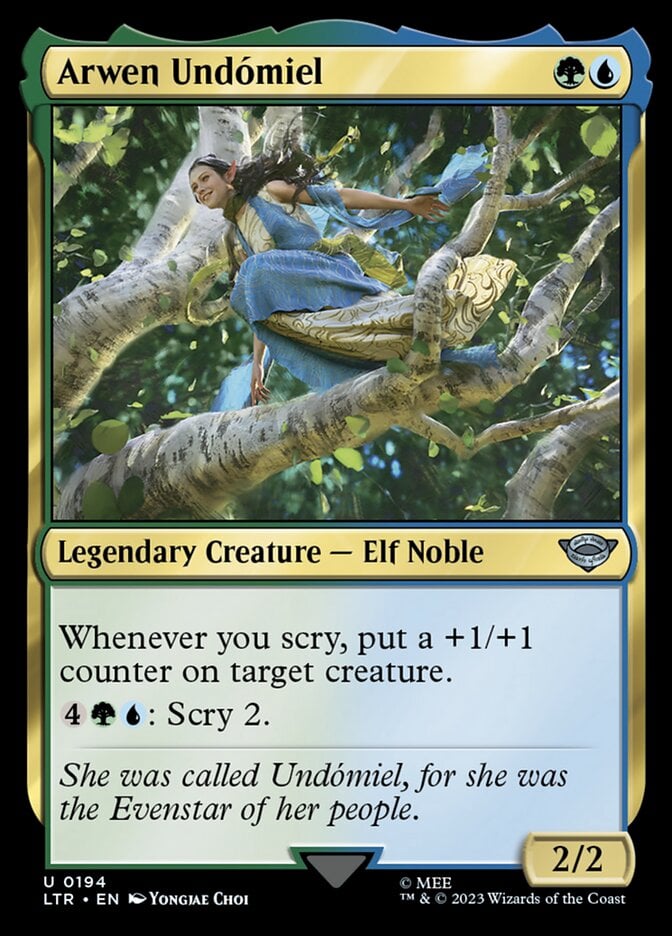
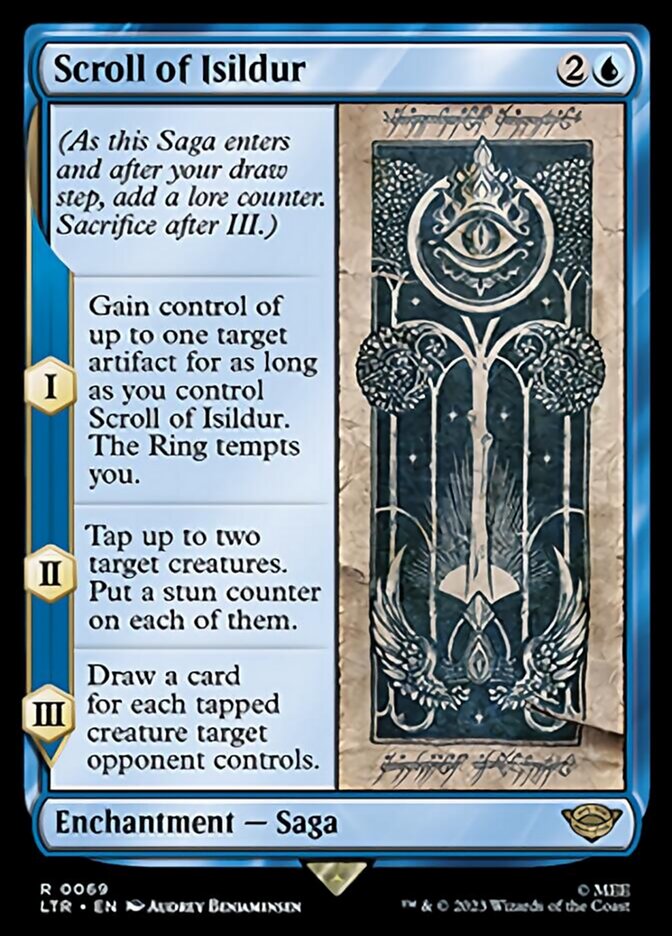

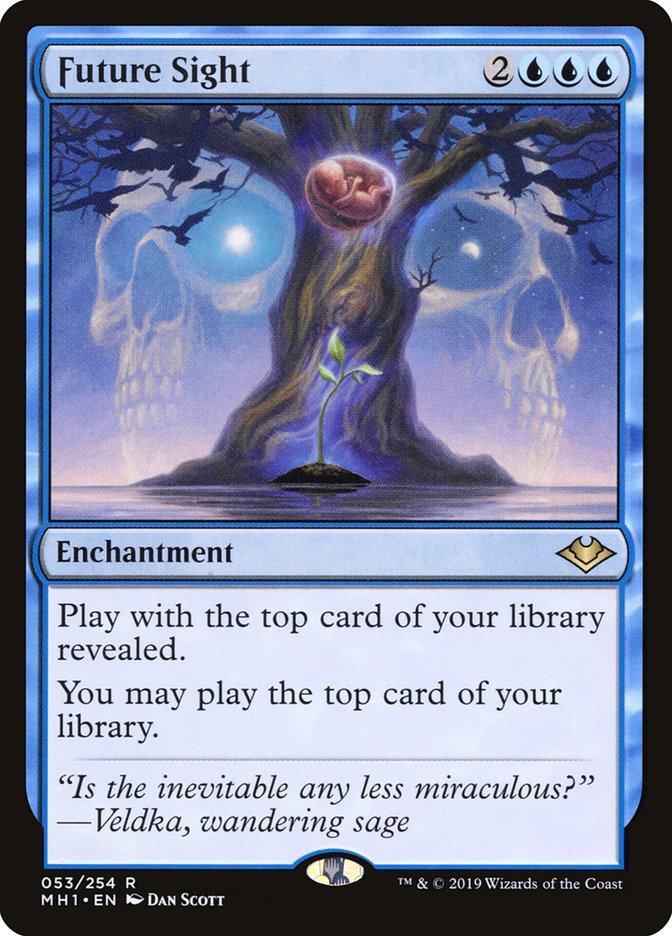
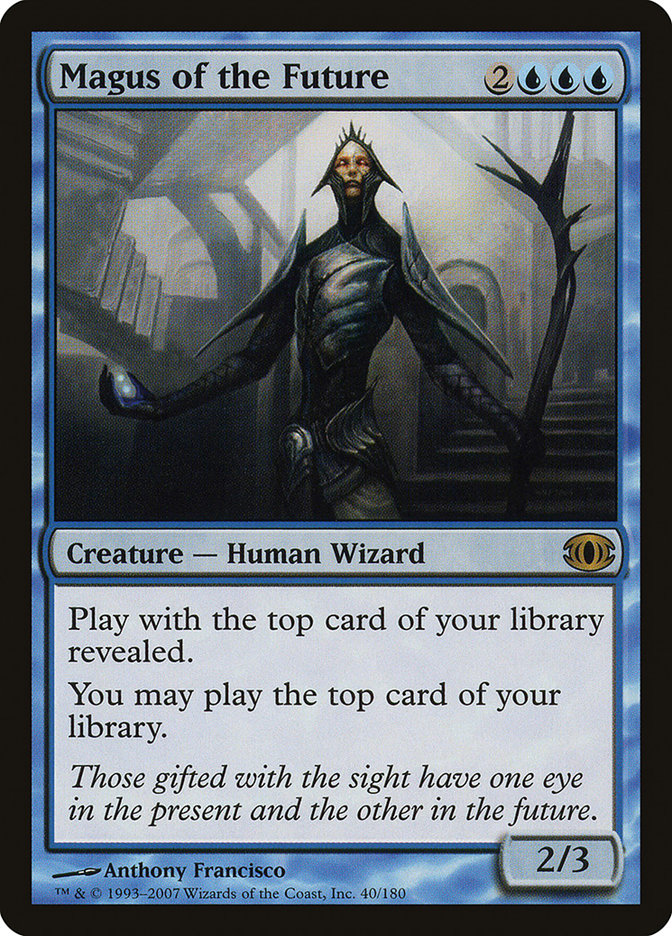
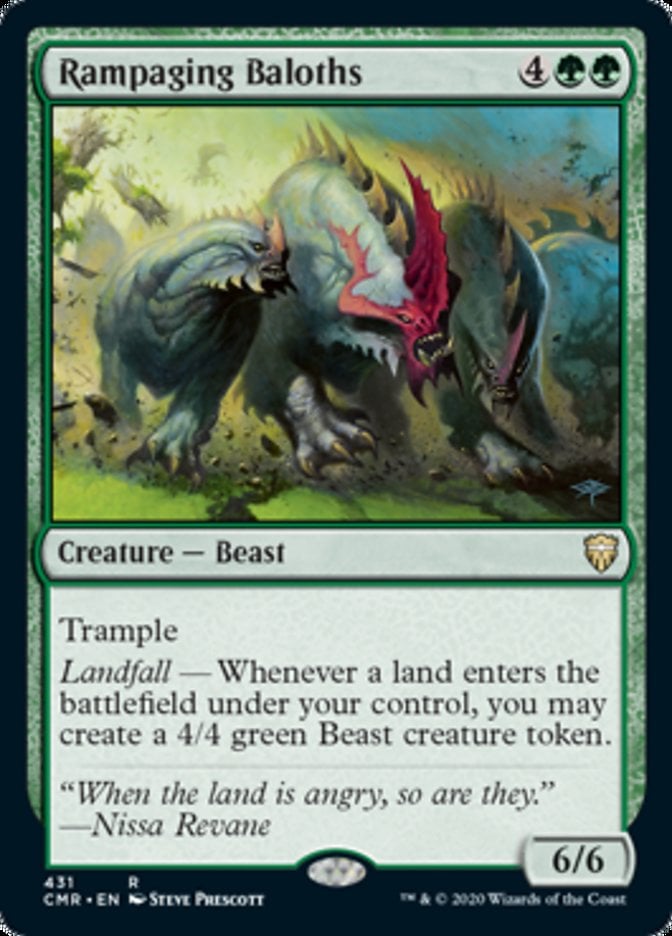
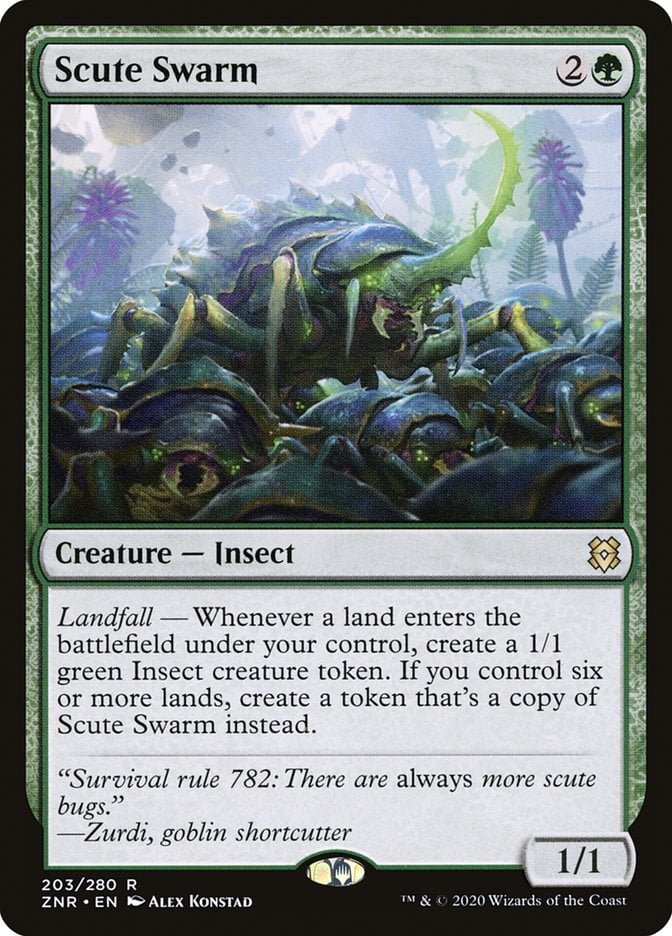
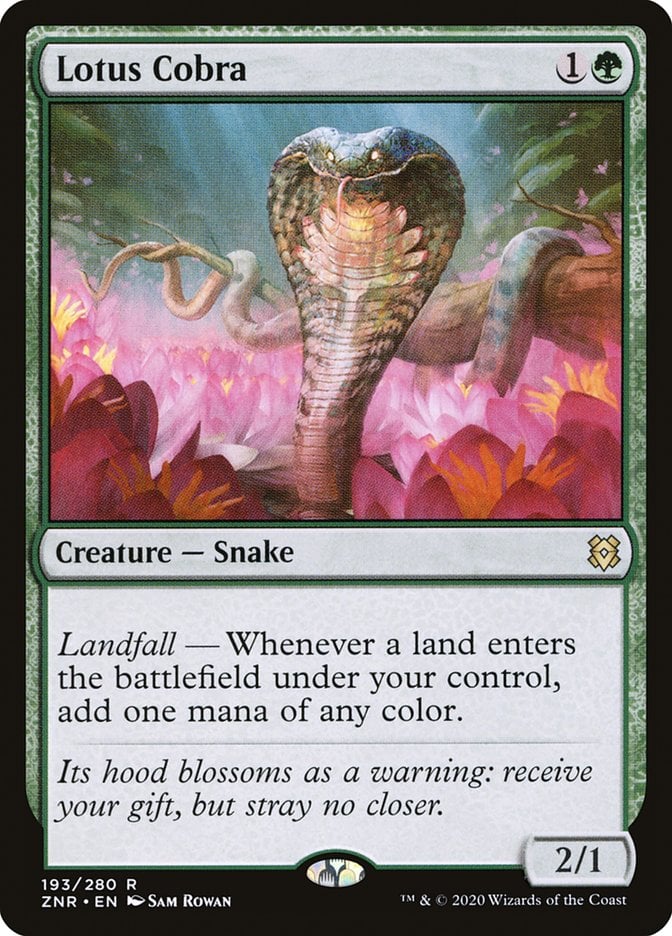
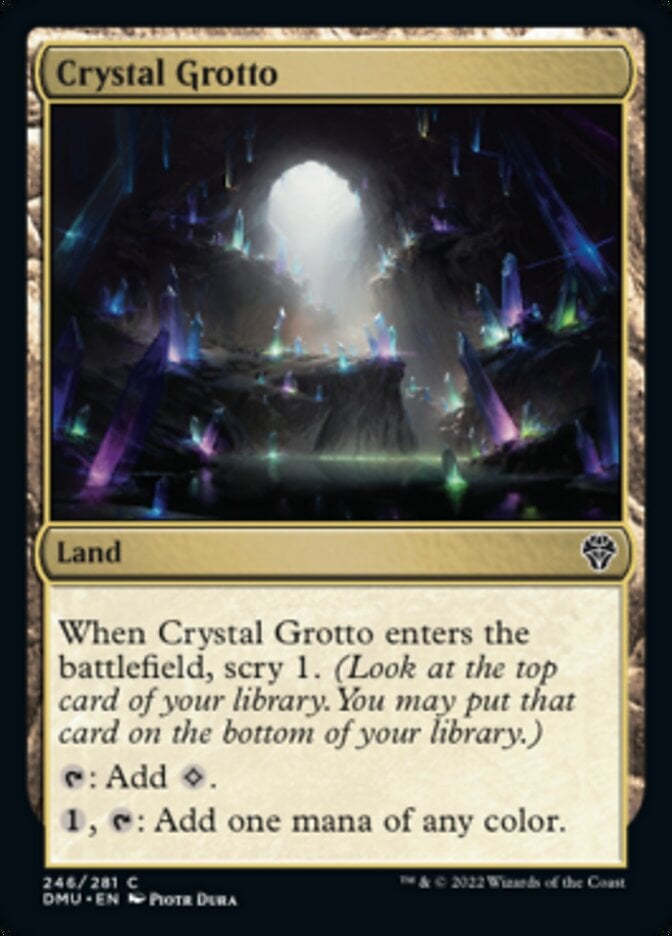
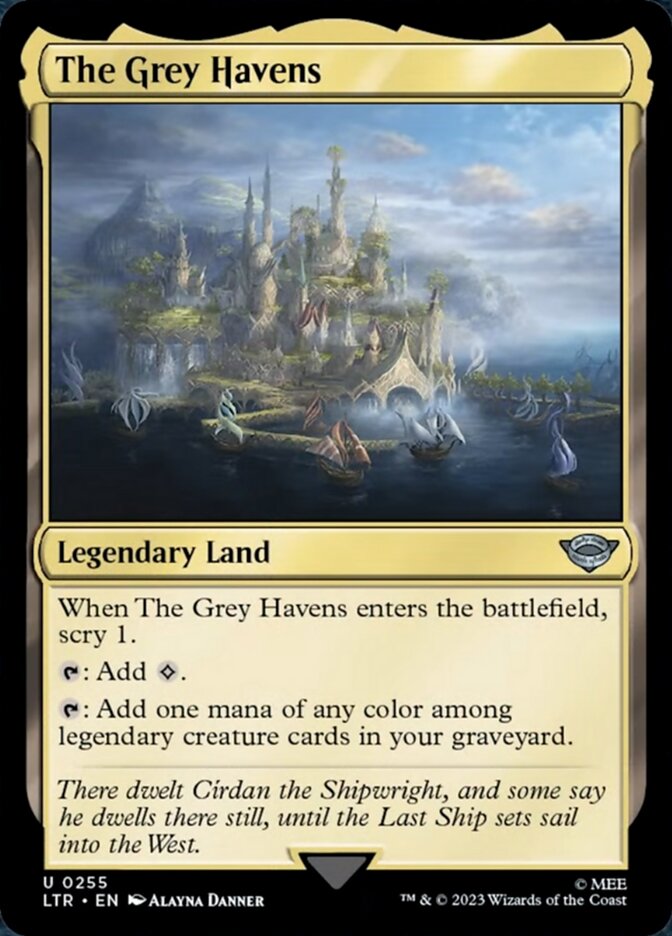
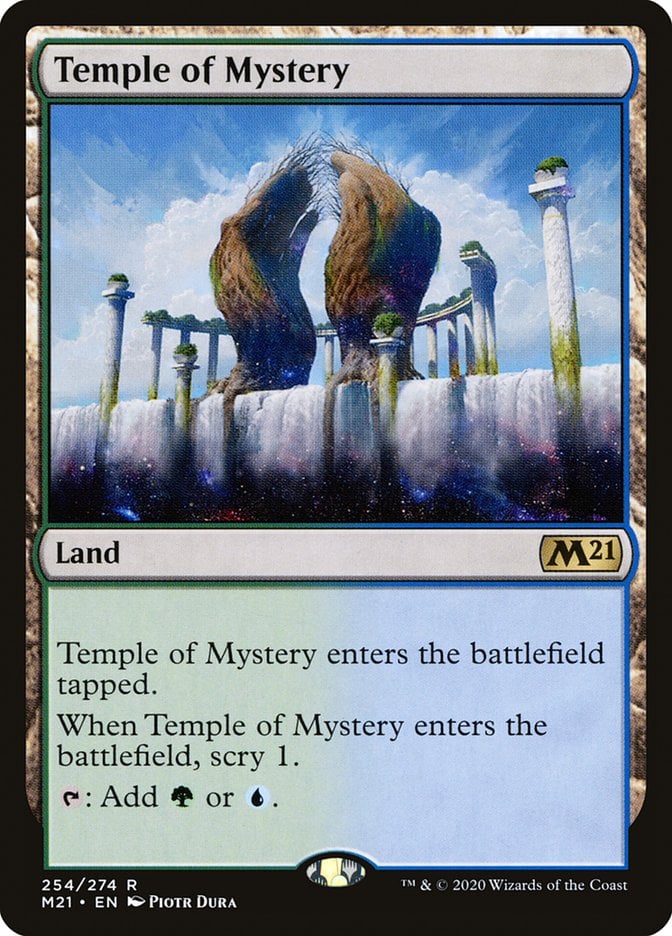
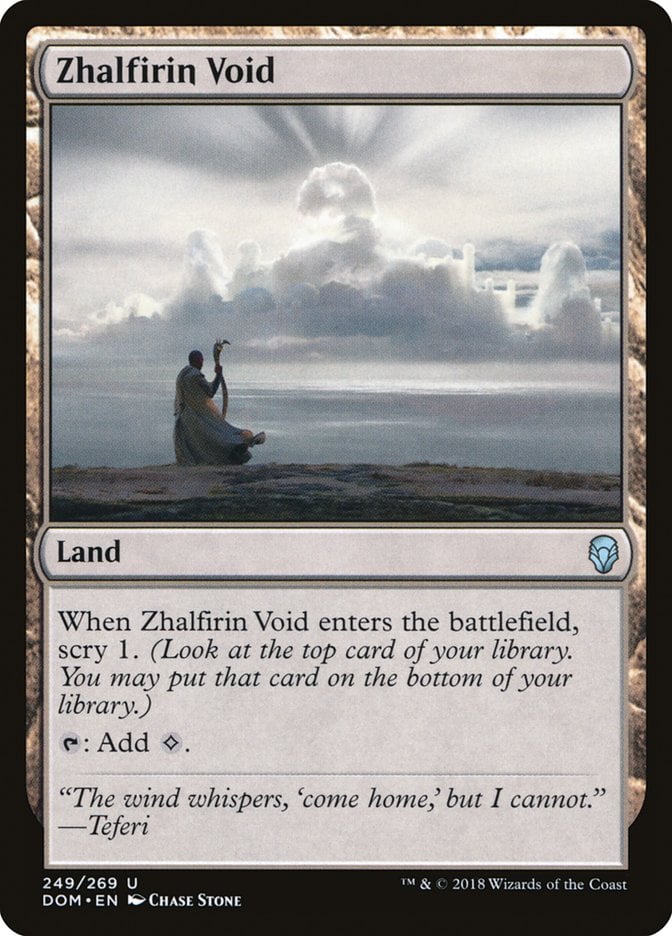
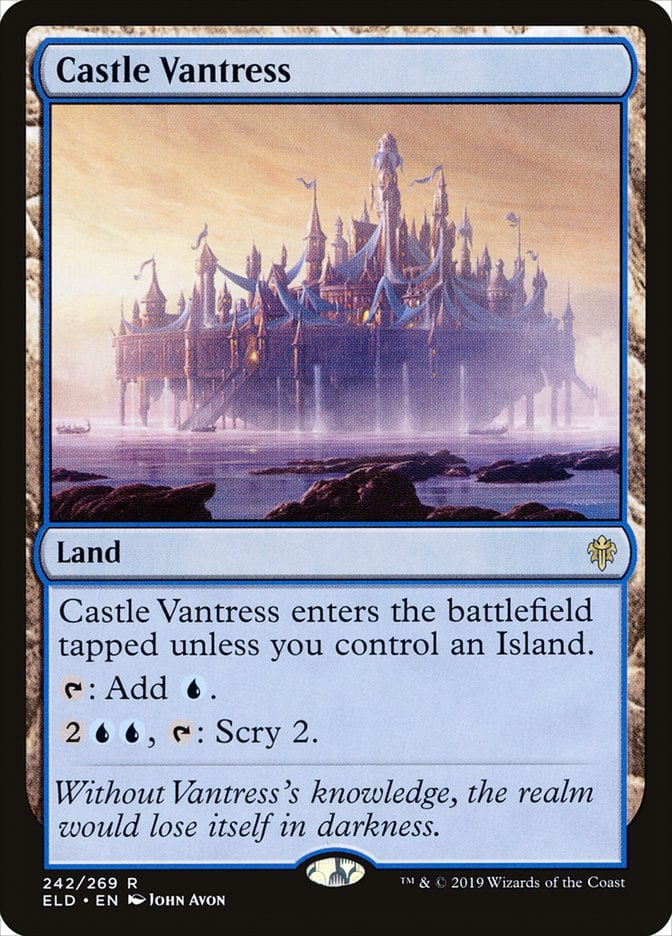
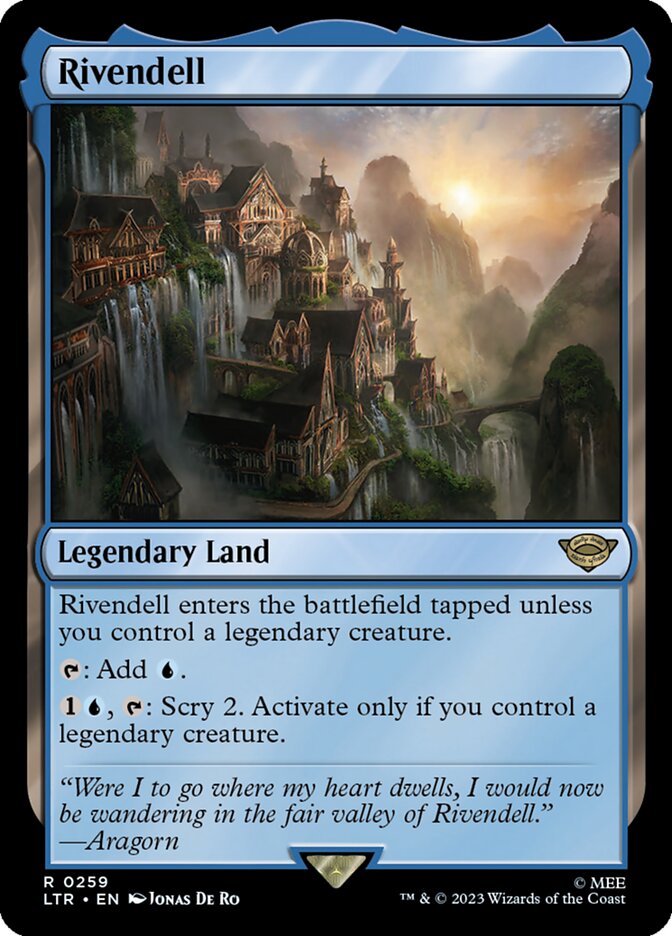
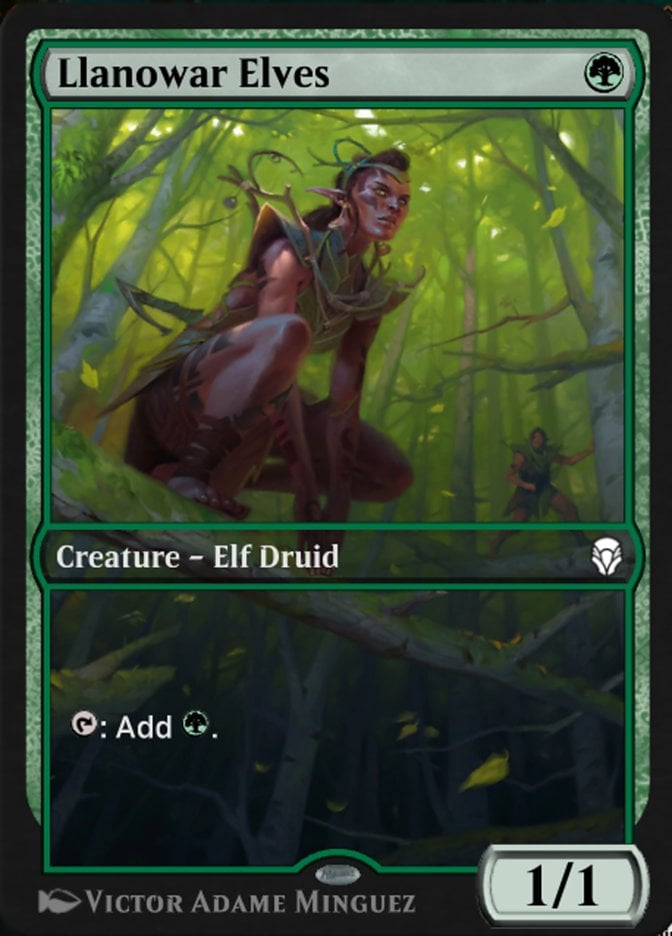


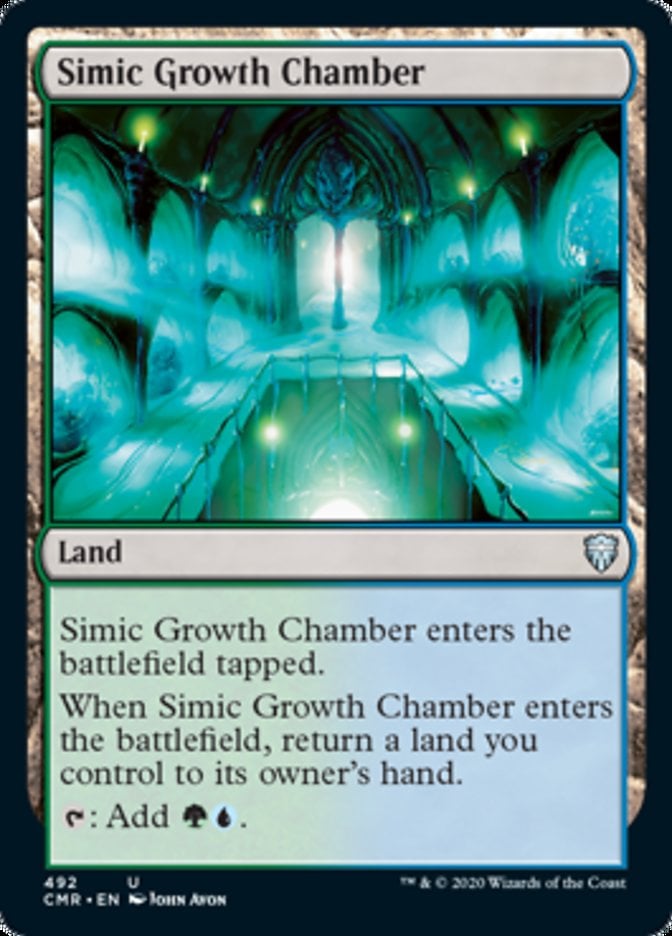

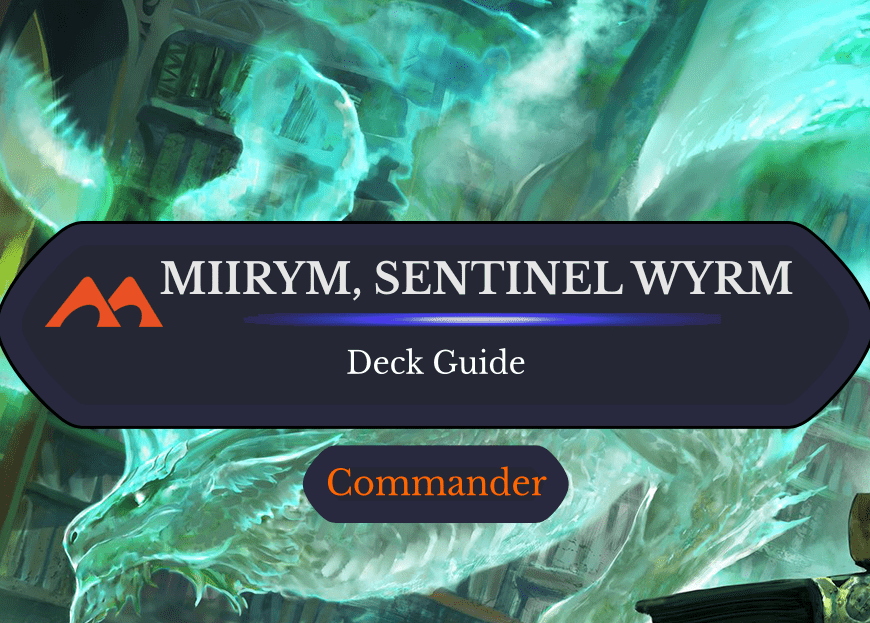
Add Comment